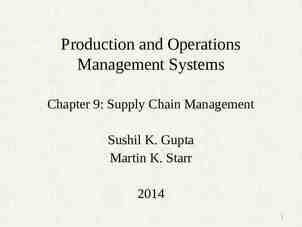Solar Power & Energy Independence By Jamie Newton
39 Slides9.55 MB
Solar Power & Energy Independence By Jamie Newton
Overview Solar Energy Potential Non-Electric Solar Power – Technologies – Implications for Energy Independence Solar Generated Electricity – Technologies – Distribution Approaches – Implications for Energy Independence
Solar Energy Potential As of February 2006, Photovoltaic technology accounted for less than 1% of worldwide electricity generation. The amount of solar energy that reaches the Earth’s surface every hour is greater than humankind’s total demand for energy in one year
Non-Electric Solar Power Solar Water Heating Passive Solar Heating/Lighting
Solar Water Heating
Solar Water Heating Advantages – Replacing or supplementing other water heating methods: natural gas, electricity Disadvantages – More expensive in cooler climates
Passive Solar Heating/Cooling Passive solar heating can use overhangs to shield the home from the sun in the summer, and warm the home when the sun is lower in the winter sky
Solar Heating/Cooling
Non-Electric Solar Power & Energy Independence Lowered Energy Consumption Broadening of Energy Portfolio Reduced Need for Fossil Fuel Imports
Solar Generated Electricity Concentrating Solar Power Photovoltaic (PV) Cells
Concentrating Solar Power Require Direct Sunlight – Concentrating solar power systems cannot reflect diffuse sunlight, making them ineffective in cloudy conditions Two Approaches – Power Tower – Parabolic Trough -Direct normal solar resource in the Southwest. Image courtesy of “Tackling Climate Change In the US: Potential Carbon Emissions Reductions from Energy Efficiency and Renewable Energy by 2030” (Charles F. Kutcher ed.). Darker colors signify greater solar radiance.
CSP Potential State Available Area Capacity (MW) Arizona 19,200 2,467,700 California 6,900 877,200 Colorado 2,100 271,900 Nevada 5,600 715,400 New Mexico 15,200 1,940,000 Texas 1,200 148,700 Utah 3,600 456,100 Total 53,900 6,877,000 - Direct normal solar resource in the Southwest, filtered by resource, land use, and topology. Image courtesy of “Tackling Climate Change In the US: Potential Carbon Emissions Reductions from Energy Efficiency and Renewable Energy by 2030” (Charles F. Kutcher ed.) Existing US Generation Capacity (2003) 1,000 GW Total Potential CSP Generation in Southwest 7,000 GW
Power Tower Solar One (CA) – Steam Heat Transfer – 10 MW Solar Two (CA) – Molten Salt Heat Transfer – 10 MW Solar Tres (Spain) – Molten Salt Heat Transfer – 15 MW
Solar Two
Parabolic Trough Sunlight focused on heat transfer fluid (HTF), which then runs steam turbine
Parabolic Trough Generating Plant Image of parabolic trough power plant in Kramer Junction, CA, which supplies power for the greater Los Angeles area. This plant, in conjunction 4 other parabolic trough plants in California, can produce as much as 354MW of electricity.
Photovoltaic Cells
Photovoltaic Potential “The basic resource potential for solar PV in the United States is virtually unlimited compared to any foreseeable demand for energy.” – Paul Denholm, Robert Margolis, & Ken Zweibel, “Potential Carbon Emissions Reductions from Solar Photovoltaics by 2030,” in Tackling Climate Change In The US: Potential Carbon Emissions Reductions From Energy Efficiency And Renewable Energy By 2030, p.99 (Charles F. Kutcher, ed., 2007) PV is flexible enough that it can be adapted for use in many areas.
Photoelectric Effect Basic process by which a photovoltaic cell converts absorbed sunlight into electricity “Photons” knock electrons free from the silicon structure, freeing them to enter electric current and power a “load” (like a light bulb)
Solar Generated Electricity Distribution Approaches Centralized (CSP) – Advantages and Disadvantages Distributed (PV Roof Installations) – Advantages and Disadvantages – Distributed PV Generation & Energy Independence
Centralized Advantages – Traditional model of distribution – No fuel costs This PV Array is part of the Sacramento Municipal Utility District, generating 3.2 MW, enough for 2,200 homes. Disadvantages – Non-Constant Power – Vulnerability
Distributed Solar (PV) Advantages – Net-metering Grid Storage – Flexibility – Reduced vulnerability to terrorist attack – Almost no maintenance – Negligible environmental impact – Domestic Production (?) Disadvantages – Cost Extensive Individual Investment Low Conversion Efficiency – CCR’s – Intermittency
Net-Metering Peak generation from PV occurs during the day Net-metering allows users to “bank” electricity they generate, and credit it against the electricity they use – Most states won’t pay users if they generate more electricity than they use, but they can “zero-out” their accounts As of 2007, net-metering is offered to some degree in 41 states and D.C. – California, New York, Texas – Net-metering is offered in Illinois by one or more individual utilities EPAct of 2005 requires all states to offer net-metering by 2008
Grid-Connected PV
PV Flexibility Stand-Alone – Water pumps – Fans Battery Backup – Isolated Areas Generator Backup Hybrid – Remote applications Grid Connected – Grid storage Utility Scale – Easy & Quick to build
PV Applications
Reduced Vulnerability Roof-by-roof power generation makes it too difficult for one strike to have a crippling effect Vulnerability of centralized generation was illustrated in the August 2003 US blackout – caused by a series of “tripped” generation facilities and transmission lines – Within the first 2 hours: 3 Coal Fired Power Plants 9 Nuclear Power Plants 5 Major Transmission Lines – Estimated loss from the August 2003 blackout has been placed at 5-6 billion.
Distributed Solar Power and Energy Independence The ultimate in Energy Independence – self-sufficiency Consumers becoming “producers”
PV Disadvantages Price – Efficiency Community Associations – CCR’s Intermittency
Price Still not “price-competitive” with traditional sources of electricity – “If you don't include the environmental costs of coal-fired electricity when comparing them with solar, it becomes very difficult. [Saving money] is not what motivates me and if that's all that motivates the consumer, then perhaps solar isn't for them.” Dr. Richard Corkish, University of New South Wales, School of Photovoltaic and Renewable Energy Engineering “Paying for Itself” – Ability of a PV system to “pay for itself” depends on the size of the installation, electricity demands it is meeting. – Residential PV system may “pay for itself” within first half of its estimated lifespan (30 years)
Price Reductions Year /W (Goal) Residential Installation Cost (2-4 kW) 2005 8.50 17,000-34,000 2010 5.50 11,000- 22,000 2015 3.25 6500-13,000 2030 2.00 4000-8,000 Goals for DOE’s Solar America Initiative for cost reduction in PV Residential (2-4kW) Systems: 2015 10-12 cents/kWh 2030 6-8 cents/kWh 148M in 2007 Funding for Solar America Initiative to spark R&D
Efficiency Conversion Efficiency – the percentage of solar energy shining on a device that is converted into electrical energy Typical Efficiencies – Single Crystalline Silicon 14% – Thin Film 7%
CCRs As of 1999, 42 Million Americans lived in community associations Many of these communities seek to establish aesthetic uniformity, protecting homeowner and developer investment and lessening the risk of undesirable activities in the community The Declaration of Conditions, Covenants, and Restrictions are one method used to ensure that homes retain a common design theme w/in a community
Typical CCR Provisions Restricting Solar Systems Prior Approval of Architectural Committee Explicit Restrictions on Placement of Solar Equipment Height Restrictions Restrictions on secondary buildings or structures Requirements that utilities be screened Restrictions on the placement of improvements Specifications regarding roofing materials Restrictions pertaining to architectural style
Architectural Restrictions Arizona HOA is battling resident over black solar collector which doesn’t match his light-brown roof Some state laws have attempted to limit the ability of CCRs to restrict solar improvements
Intermittency Obviously, solar power requires sunlight to generate power This means that: – No power is can be generated at night – Power generation may be reduced by cloud cover However, PV will still work with overcast skies – Generation techniques requiring direct sunlight (CSP) are ineffective w/o optimum conditions Solutions: – Generators, Batteries, Hybrid Facilities – Hydrogen
Hydrogen Hydrogen can be used as an energy carrier Hydrogen can be created from water through a process called “electrolysis” – DC current is used to split water into hydrogen and oxygen Energy from renewable sources, like solar power, can be used to manufacture hydrogen Commercial feasibility of solar generated hydrogen is far off
Solar Power and Energy Independence Lessen Reliance on Fossil Fuel Stabilize Energy Costs Re-conceptualize Distribution of Energy – End-user production – Distributed system lessens large-scale vulnerability Production Method for Hydrogen Economy












































